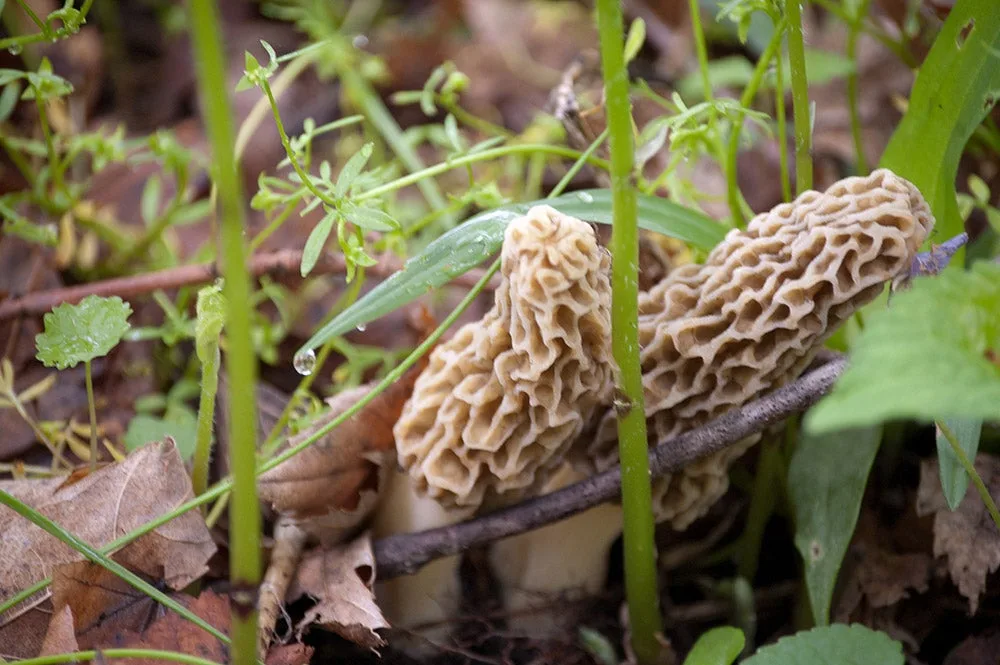
| Morels can be hard to spot, and one of the most common mistakes among foragers is walking right past them. Flickr/George P. Macklin |
For a lot of outdoorsmen, especially this time of year, “mushrooms” means “morel mushrooms.” Widespread, delicious, and easy to identify, morels are our best-known and best-loved wild mushroom. In many parts of the country, spring is the best time to forage and find morels. If you aren’t bringing them home by the bagful, here are 10 possible reasons why—and some tips to help you save your morel mushroom season.
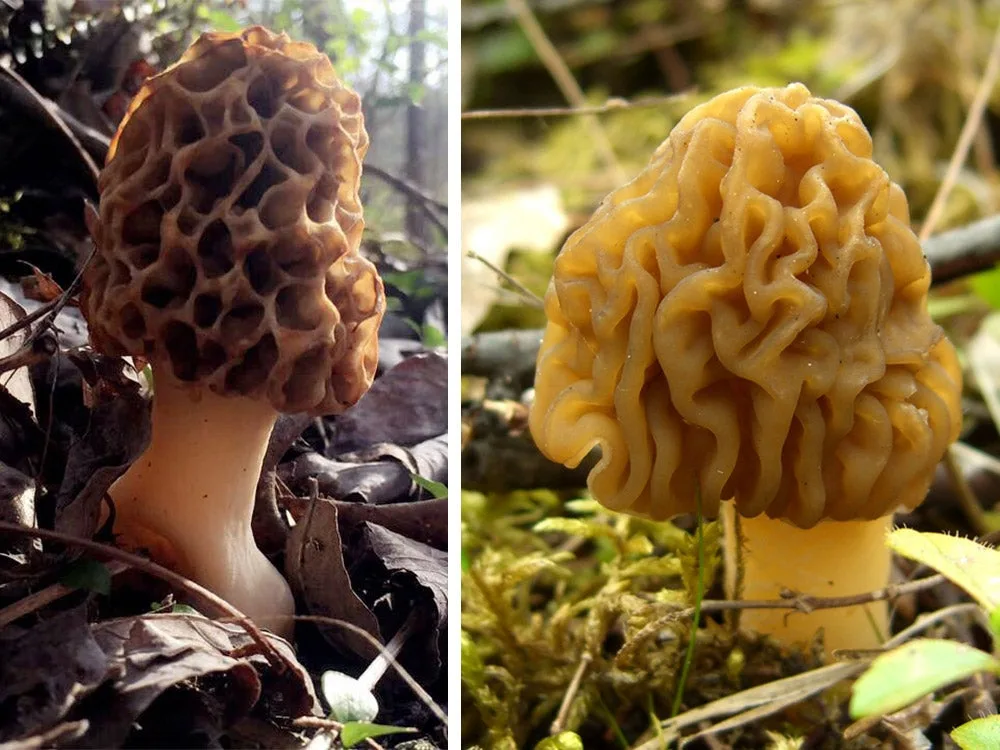
| At left is a real morel, which is distinguished by its pit-covered cap. At right, the ridges on the cap are a dead giveaway for a false morel, which can be toxic. Wiki Commons |
1. You Don’t Know What Morel Mushrooms Look Like
Morels are easy to identify, but you still have to know what they look like and how to tell the real thing from false morels. Real morel mushrooms are hollow, and their caps are attached to the stem at the bottom. The caps have pits all over. The mushroom that most resembles the morel, the verpa, has ridges, not pits, and the cap isn’t attached at the bottom. You can see a sort of skirt along the bottom edge instead. The other false morels are big, non-symmetrical, and clearly ridged. Avoid the verpas and false morels, which are, at the least, not tasty and, at the worst, toxic enough to make you sick.
2. You Go Morel Mushroom Hunting at the Wrong Time
Ground temperatures need to reach 50 degrees for a few days before morels start coming up. If you want to get scientific, check U.S. Weather Service temperature maps. If you want to be old-fashioned, watch for the leaves on oak trees to reach the size of a mouse’s ear. Morel mushroom season can last a long time—until ground temperatures get too high and undergrowth makes it difficult to spot the last morels of the season. Once daytime air temperatures reach the 80s, the season is usually over.
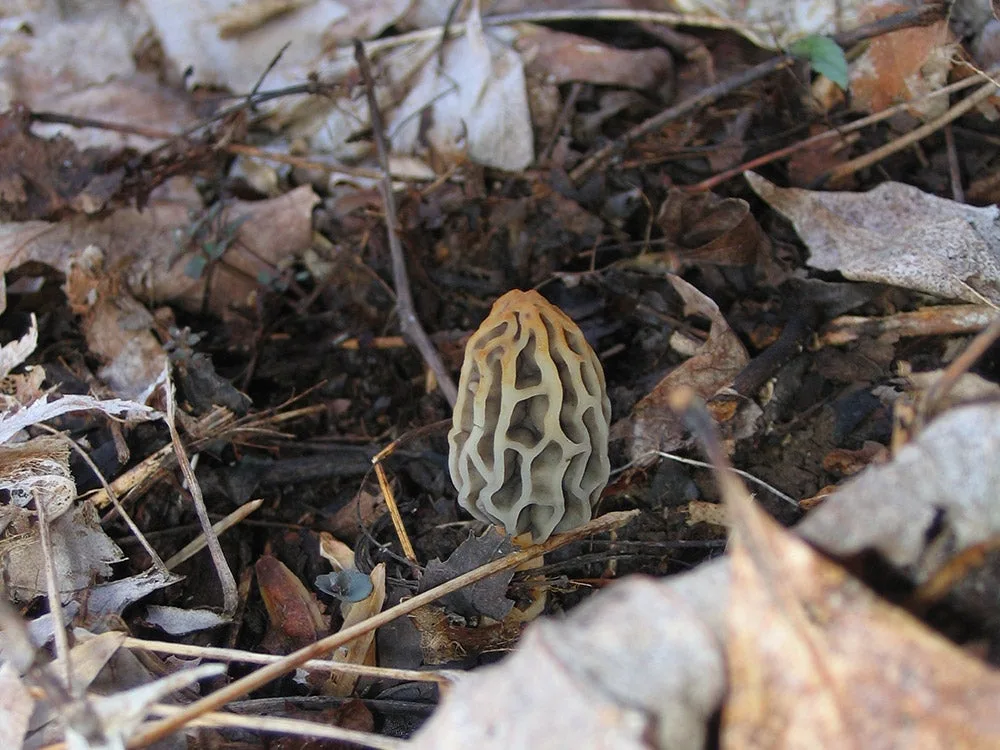
| On a morel hunt |
Bring a walking stick on your morel hunts to clear undergrowth and uncover hard-to-spot mushrooms.
Read Next: Eat The Woods: 20 Wild Foods To Help You Stock The Pantry
3. You Walk Right Past Morels
Finding morel mushrooms can be tough. They are hard to spot, especially the smaller black ones that come up first. Rather than looking straight down at the ground, look about 10 feet in front of you for a Christmas-tree shape as you walk through the woods. Use a walking stick to push undergrowth aside to give you a clear look once you’ve found one and are searching for the others that should be nearby.
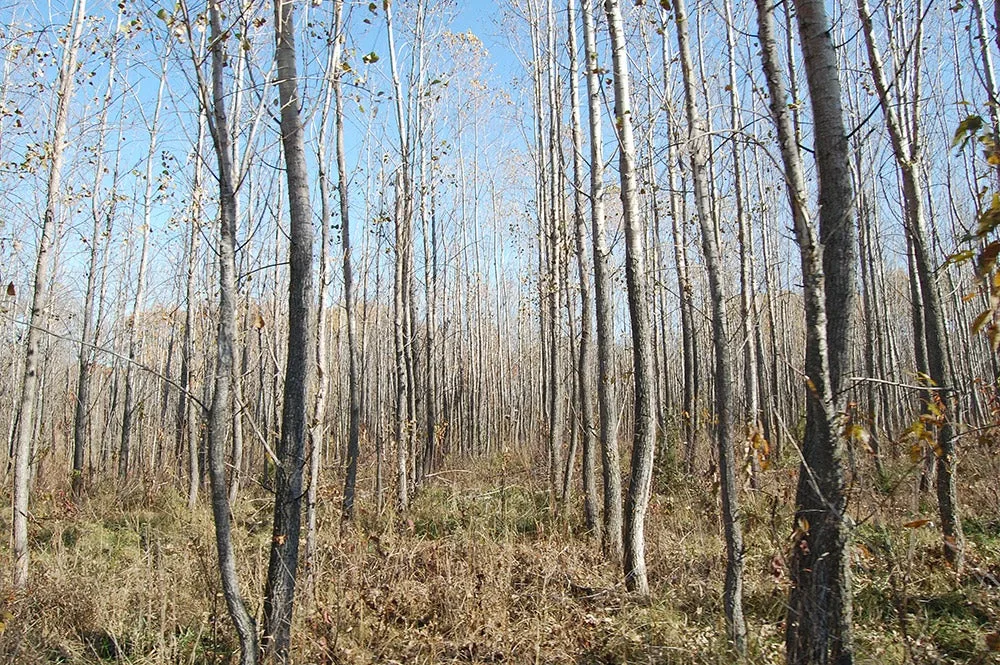
| Poplar trees can be a hotspot for morels in the East and Midwest. Flickr/Kiley |
4. You Don’t Know Your Trees
In the East and Midwest, you find morels around elms, sycamores, ash, and poplar trees in some places, cottonwoods and black cherries in others. Apple orchards anywhere are a good bet. You often find bumper crops around dying trees. In my part of the Midwest, the best morel mushroom tree is a dead elm with the bark still on the trunk, but beginning to slip off. In the west, morels are found in fir and spruce forests, where you should look for trees killed by insects. Once you learn which trees produce in your area, key on them.
5. You Don’t Cover Enough Ground to Find Morels
Morel mushrooms are often are found in microclimates in the woods where temperatures and conditions are just right. The best analogy I’ve heard for morel hunting is to treat it like bass fishing: Move steadily until you find one, then slow down and work the area carefully. After that, concentrate on similar areas the same way anglers look for patterns on a lake. Early in the season, you’ll find morels on south slopes where the ground warms first. Later on in the season, you’ll find them on cooler northern slopes.
6. You Go to the Same Old Morel Mushroom Hunting Spots
Morels are a moving target, albeit a slow moving one. The morels themselves stay put, but the places they grow can shift over time. Disturbances in the ground, the condition of dead and dying trees, and changing rainfall patterns and temperatures can all make an old spot go bad and a new one produce. Usually you’ll find morel mushrooms in the same place for a few seasons in a row, but when your spot dries up, you need to go prospecting elsewhere.
7. You Don’t Hunt Burns for Morels
The first year after a burn yields incredible morel mushroom hunting, especially in the West. If there’s fire, then rain, you’re in for good hunting. A couple of springs ago, I picked 12 pounds out of burned area not much more than 30 yards across. The link between burns and mushrooms seems strongest in western conifer forests.
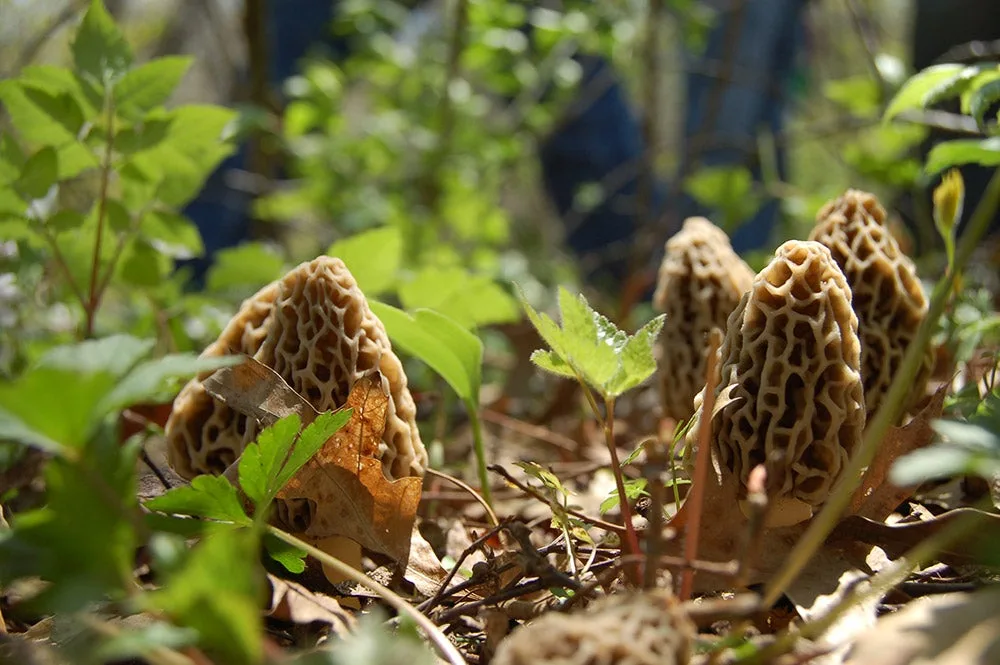
Cover ground steadily until you find one morel—then work that area thoroughly, because you’re likely to find more.
| Cover ground steadily until you find one morel—then work that area thoroughly, because you’re likely to find more. Flickr/Witold Waschut |
Read Next: How to Find, Clean, and Cook Fiddlehead Ferns
8. You Don’t Check Back
If a spot looks promising but you don’t find morels, check back in a week or so. Just because you found them at the spot on a certain date last year doesn’t mean they won’t come up there earlier or later this year. Be persistent.
9. You Don’t Look for Morels…Everywhere
If it’s mushroom season, your eyes should be on the ground no matter where you are, because the answer to the question “where to find morel mushrooms?” can be “anywhere.” Years ago, I was pushing my son on a swing at a local park and looked down to find about 20 small morels growing in the grass around the swing set. For a few more springs, I could reliably find them around the swings at the very beginning of our season.
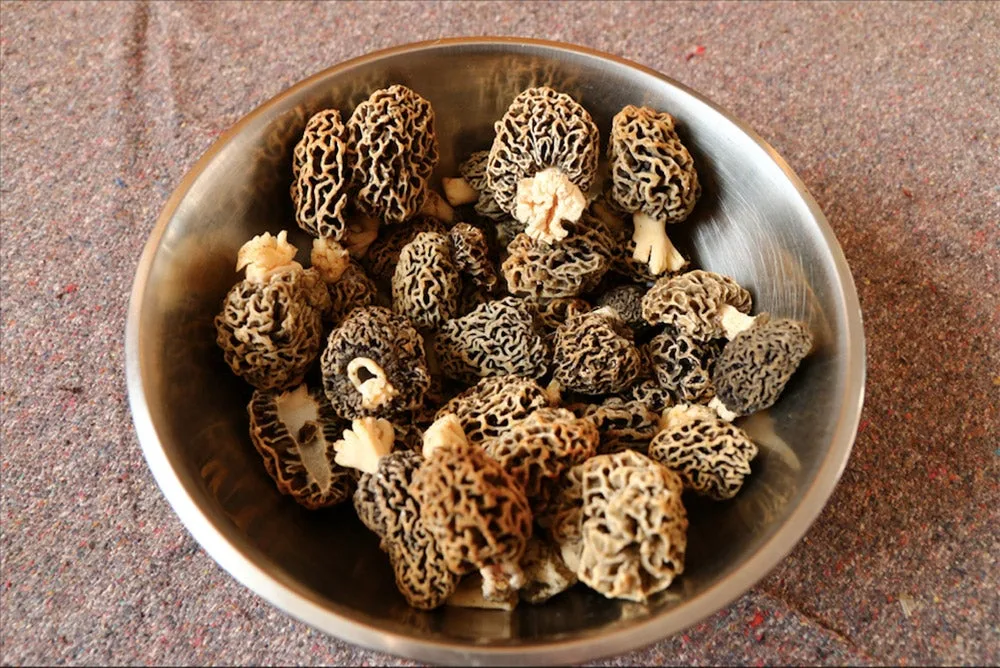
| If and when you do hit morel pay dirt, guard your secret spot closely. Flickr/Witold Waschut |
10. You Can’t Keep a Secret
Morel mushroom hunters are secretive. There’s a reason for that: Nothing is more discouraging than finding stems in the wood where someone beat you to the harvest. The first rule of mushroom hunting is, everyone talks about mushroom hunting…they just don’t talk about where. If you want your mushroom spots to remain secret, don’t tell anyone where they are.
Read Next: Where to Find Morel Mushrooms This Spring
The Secret to Cooking Morel Mushrooms
Think of cooking morel mushrooms like cooking wild game: the simpler preparations are often the best. Batter-fried morels are popular where I live, and they’re great, but you miss out on some of the subtle, almost steak-like flavor of morels when you fry them. All you really have to do is saute them in butter and sprinkle them with salt. If you want to get more elaborate, scramble some sauteed morels with eggs and hint of tarragon, and you may never fry mushrooms again.






